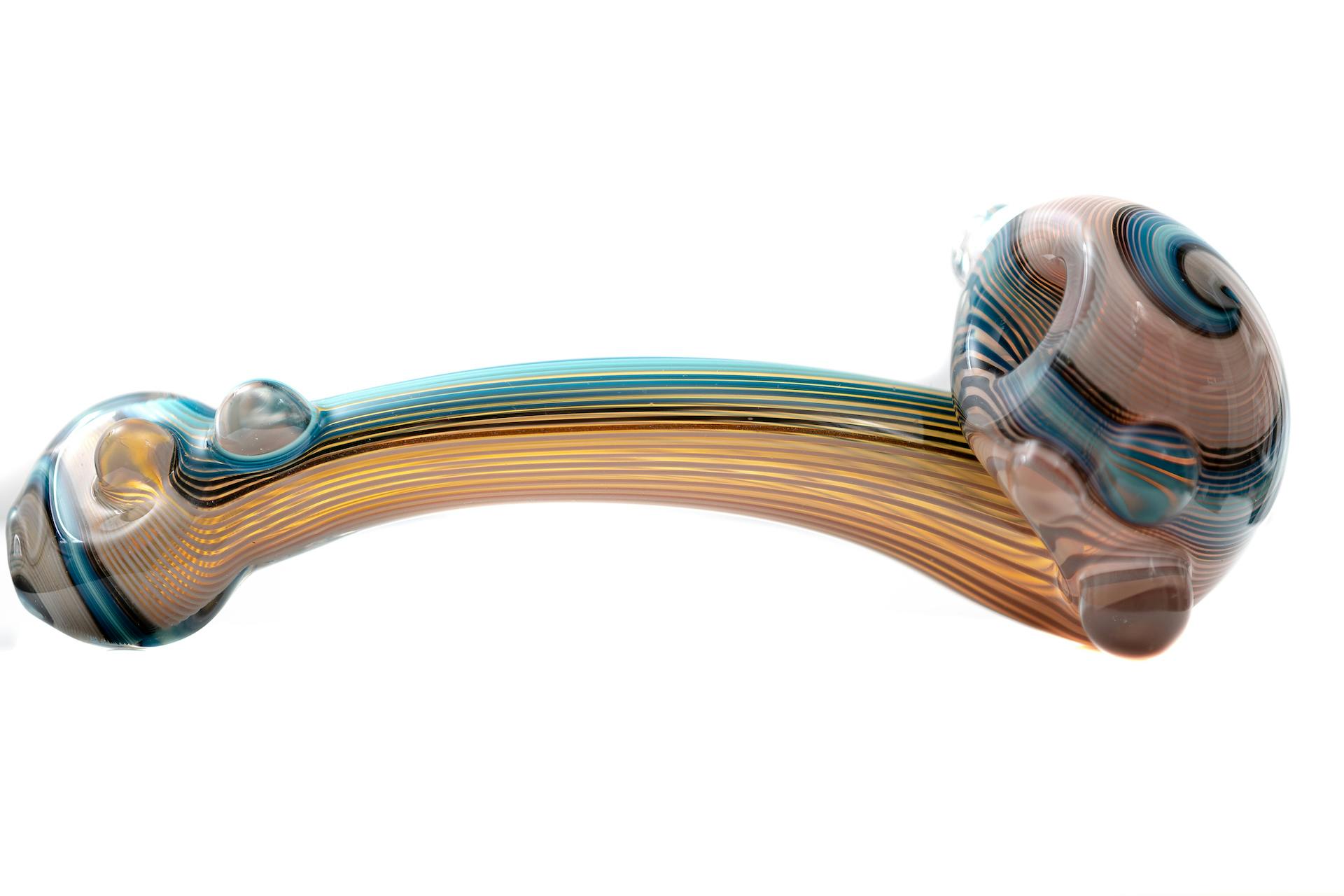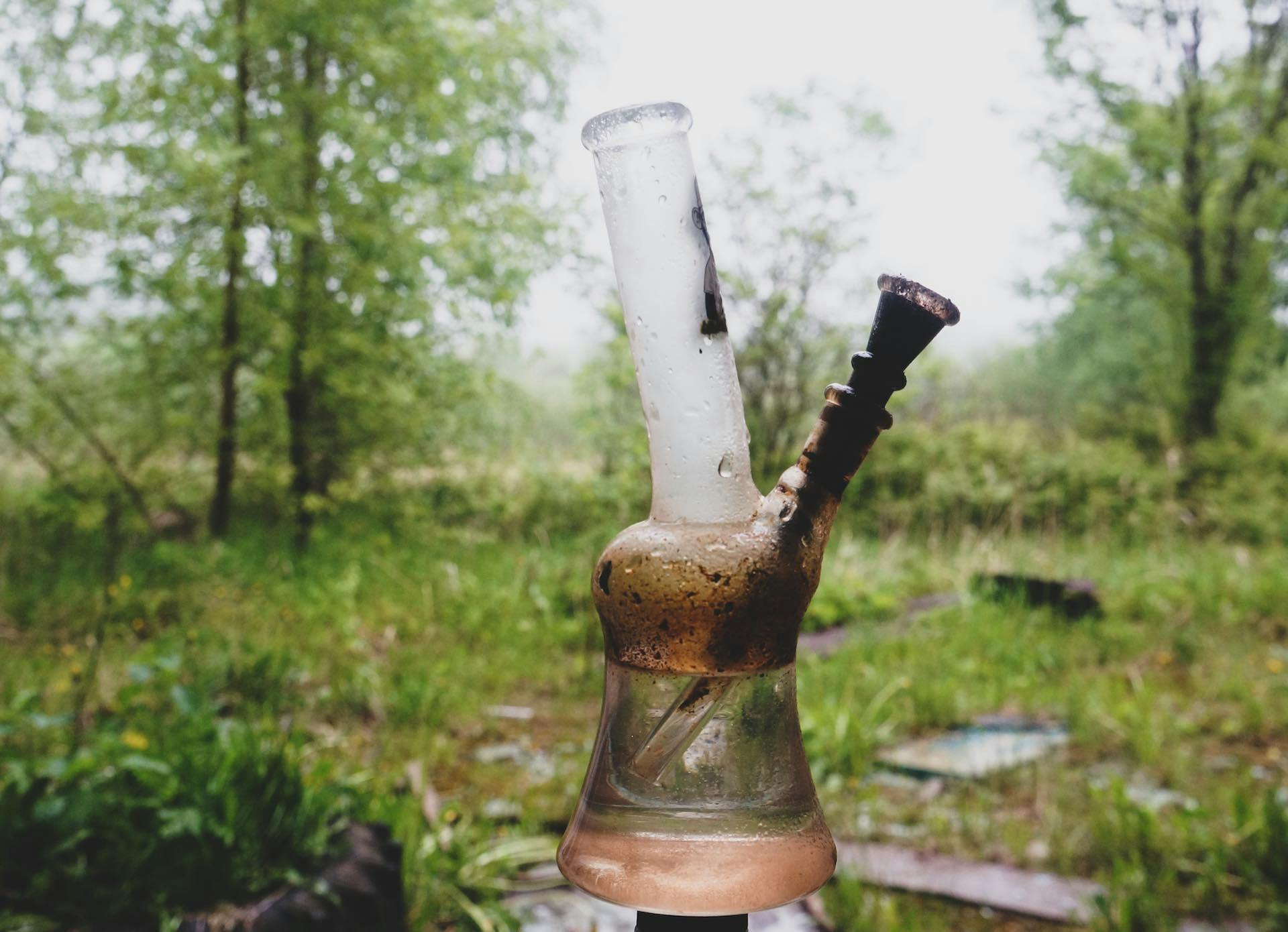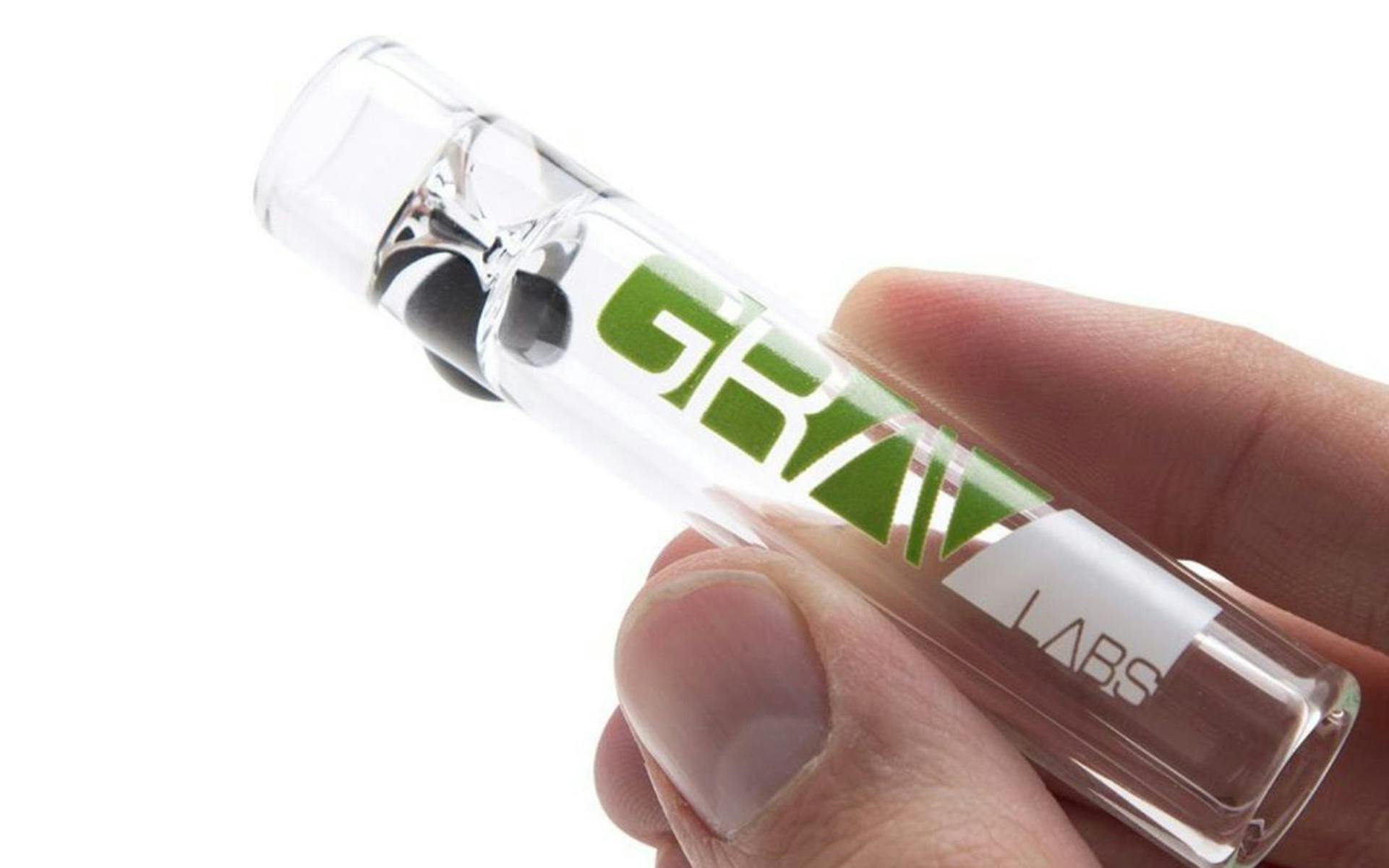Written by Matt Stangel

While it’s true that contemporary weed pipes are made from numerous materials, the bulk of today’s cannabis smoking devices are glass.
Glass herb pipes are prized for their clarity of flavor, durability, and resistance to heat. You won’t find glass tobacco pipes, even if they’re sold as such. Glass means ganja.
This can be confusing because for decades, glass weed-smoking devices have been sold for “tobacco use only”—a vestige of former times when paraphernalia had to be sold under another use to give pipe sellers a legal defense.
The same is true for bongs, or water pipes, which originated overseas. In the West, they’ve been framed around tobacco use for decades—albeit with a wink and a nudge.
What is a glass pipe?
The word “pipe” applies to countless devices made for lighting weed on fire and directing the resultant smoke into a person’s mouth.
Consisting of a bowl, chamber or stem, mouthpiece, and often an air hole for clearing smoke called a “carb”—short for “carburetor”—weed pipes take numerous forms: chillums, one-hitters, spoons, sherlocks, hammers, sidecars, and so on. These are all styles of pipes used solely for cannabis consumption that are usually made of glass.
When we say “pipe” we aren’t talking about the ones made for tobacco: working-class corncobs, erudite meerschaums, quotidian cuttys, upper-class fancies, dramatic churchwardens, dramatized calabashes, etc. These pipes are all for tobacco and are originally made out of clay, and more recently, wood.
The history of pipes
Modern cannabis-smoking devices borrow from tobacco and weed traditions from across the globe. They all get their features from American and European tobacco pipes, as well as hashish, ganja, and opium pipes from Asia, Northern Africa, and the Middle East—regions of the world where cultural relationships with cannabis pre-date and influence those of the West.
According to cannabis history writer Richard Gregory, the centuries-old chillums of India were the first weed-specific pipes to make it stateside, imported during the 1960s by open-minded pilgrims returning from The Hippie Trail. Bongs, an Asian invention, found favor among American soldiers serving in Vietnam.
Glass pipes are a relatively new domestic invention of the last 40-50 years. When the glass spoon came to be in the mid-to-late ‘70s, it represented a departure from the tobacco and indigenous weed pipes of its day by combining elements and forms from both.
More recently, intricately detailed sculptural smoking pipes called heady glass pieces are being embraced by major art institutions. In a 2021 Instagram post, the Corning Museum of Glass called glass pipemaking “one of the fastest growing areas of art glass production in the 21st century.” Glass pipes have evolved into a unique American artform, which can sometimes command up to six-figure price tags.
Types of glass pipes
Glass pipes take many forms: some are traditional to cannabis, others are reimagined variations on tobacco-smoking pipes, and some combine elements from both.
As pipes evolve to accommodate extracts and concentrates, they are also starting to incorporate designs and aesthetics that originated with dab rigs. Meanwhile, legalization has created a busy marketplace of pipes and accessories that cater to new consumer demographics.
Here’s an overview of the most common pipes, which have persisted for decades.
One-hitters

One-hitters, pinch pipes, and bats—they’re all straight and slender pipes intended for small servings of weed. Usually reserved for solo sessions, one-hitters are great travel pipes, limiting consumption to just a few discreet puffs at a time.
Options are many and ever-changing: Some one-hitters are made to look like a fake cigarette for undercover public consumption, others wear their cannabis on their sleeve, and still more are fully utilitarian and as cheap as pipes can be.
There’s an effort to create one-hitters that appeal to younger generations and new demographics that weren’t buying pipes until recently, when legalization made visible the many types of cannabis lovers living among us.
Chillums

In the US, chillums get lumped in with one-hitters so often that the straight, cone-shaped pipes have been separated almost entirely from their history.
Originally a hookah bowl piece native to India and Afghanistan, the chillum came to be used on its own for consuming a mixture of hash and herb.
Hit from cupped hands like a little chimney emerging from a bird-call grip, chillums traditionally don’t touch a person’s lips. They’re lit by a third party, unlike the Americanized one-hitters preferred for solo missions.
Traditionally, the chillum was a pipe reserved for social settings—shared in circles amongst friends. Because two or more people were required to light the chillum, it would’ve been rare to see someone smoking one alone.
As with the tobacco pipes of the Americas and Europe, chillums were first made of clay and wood before they were translated into glass, metal, or any other modern material.
Spoons

Spoons are probably the most widely used of all Westernized cannabis pipes. They resemble traditional tobacco smoking devices and are ideal armchair companions.
A basic spoon consists of a bowl on one end and a mouthpiece on the other, with a stem in between. Additionally, a carb is usually located on the bowl side of the pipe, a small hole that’s covered while a person lights up, and is then released, clearing smoke in the pipe.
Spoons are excellent because of their size and functionality: They take up less space than a bong and run cooler than a chillum or one-hitter. Spoons have always been glass, made of borosilicate for heat resistance, purity of flavor, and easy cleaning.
While bowl and stem designs are European in origin, carbs were originally found on the bongs of Asia and were later adapted for hand pipes. Therefore, the spoon represents a combo of Western tobacco culture and Eastern cannabis tradition.
Spoons are the American invention that kicked off the melting-pot approach to pipemaking, spawning multiple generations of innovation that continue to improve the smoking experience.
Hammers & bubblers

A hammer pipe looks a lot like a spoon, but in place of a spherical bowl piece is a bowl that is more cylindrical—imagine the head of a mallet, and the handle sticking out would be the stem of the pipe.
The stem is usually located toward the top of the cylinder bowl, enabling the bowl to be an ash-catcher. Like spoons, a carb is located at the top of the bowl for clearing smoke.
Many hammers also feature a chamber for water—these are bubblers or “hammer bubs,” short for “hammer bubblers.”
Steamrollers
A steamroller is a straight, open-ended hand pipe that shares the spoon’s core elements: mouthpiece, stem, bowl, and carb.
But the two designs differ in shape and layout. Where a spoon features a bulbous, spherical bowl, a steamroller is a straight round tube with two open ends and a simple indented bowl into which herb is packed. One end is the mouthpiece and the other acts as the carb.
Compared to a spoon, this larger carb—usually equal in diameter to the stem—makes for a higher ratio of air to smoke when clearing a hit.
Ergonomically, steamrollers aren’t suited for all: The steamroller’s larger carb can be awkward to operate for folks with smaller hands.
Sherlocks

The Sherlock is a hand pipe with a signature swooping shape, curving down from the mouthpiece and then up into the base of the bowl.
Sherlocks made of glass for cannabis are based on the meerschaum-lined calabashes—a tobacco pipe that was popular with stage actors depicting Sir Arthur Conan Doyle’s intrepid detective, Sherlock Holmes.
Popularized in and possibly originating from South Africa, a true calabash is made from a gourd that’s purpose-grown into a pipe shape and later hollowed, dried, and modified to accept a bowl.
Modern glass Sherlocks feature a carb—something that wouldn’t have been found on the original tobacco ones—and the design’s bent neck catches ash and is believed to cool and mellow smoke, so the Sherlock isn’t entirely for show.
Read more of Leafly’s guide to smoking marijuana
- How to smoke weed
- What’s the difference between joints, blunts, and spliffs?
- What is a pre-roll?
- How to roll a joint
- How to roll a blunt
- How to roll a crutch for your joint or spliff
- What is a cannabis grinder?
- What is a glass weed pipe?
- How to pack and smoke a bowl of weed
- What is a one-hitter pipe?
- How to make an apple pipe
- What is a bong?
- What is a gravity bong and how do you make one?
- How to clean glass bongs and pipes
- What is kief and how can you use it?
- What are moon rocks and how do you smoke them?
- Sploofs 101: How to reduce smell when smoking cannabis
- Need a light? 4 alternatives to using a lighter
- What is hotboxing with cannabis and does it work?
By providing us with your email address, you agree to Leafly's Terms of Service and Privacy Policy.



